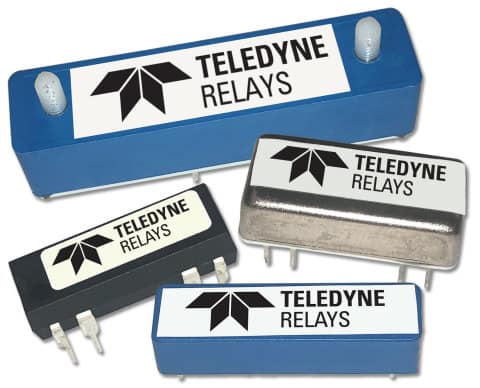Teledyne Relays has announced the availability of four new reed relay product families that offer long life of up to 1 billion cycles and are ideal for applications where high reliability is essential.

Reed relays offer a compact and lightweight solution for the switching of AC or DC signals. Contacts are hermetically sealed inside a glass envelope which protects them from corrosion. Compared with other mechanical-based relays, reed relays offer low power consumption, low contact capacitance and faster switching speeds.
These reed relay product families are optimized for different customer demands:
- Single-in-line (SIL) and Dual-in-line (DIL) packaged parts containing one or more reed switches and an electromagnet, encapsulated in thermoset plastic and packaged for easy solderability to a printed circuit board, or inserted into sockets for easy replacement.
- The new HVR series relays are designed for high voltage/high power applications, and can switch up to 7.5 kV, 1.5 kW.
- For applications where isolation is a priority, the HIR series offers up to 3 kV isolation between coil and contacts.
- MCR series relays are designed with a focus on metal shielding. Options include shielding to protect contacts from external interference from other nearby relays and components, or to isolate contacts from electrostatic interference coming from the coil circuit.
“Teledyne’s new products provide some of the fastest switching times, highest vibration resistance and widest operating temperature ranges available,” said Michael Palakian, Teledyne Relays’ Global Director of Sales & Marketing.
Applications for the new products include radar, telecommunications, automated test equipment, dielectric voltage testing/ Hi-Pot testing, ESD sensitivity testing, and power protection circuits.












